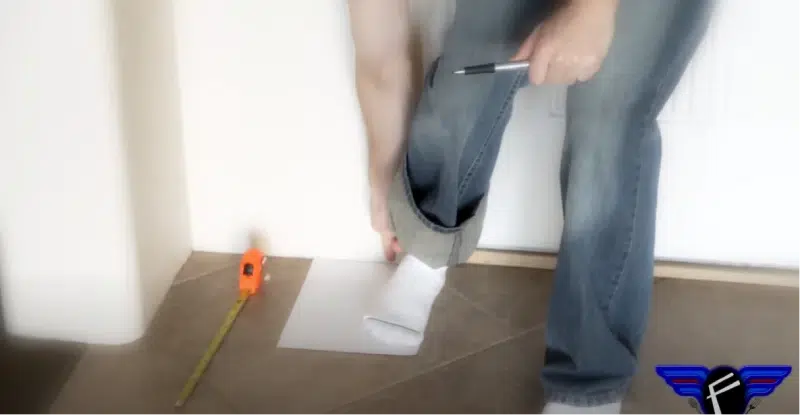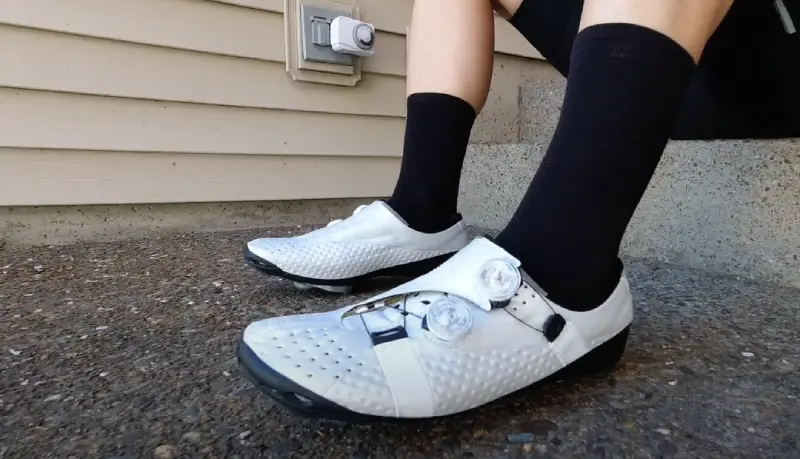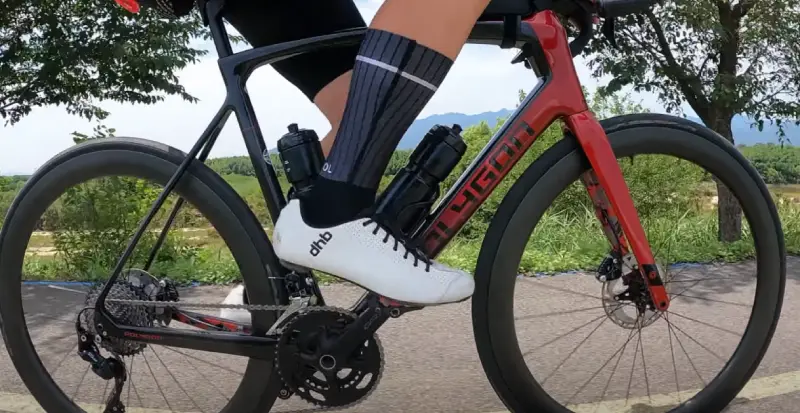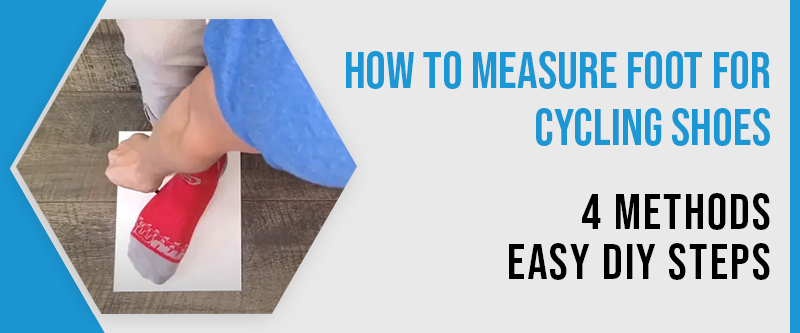Improper foot measurement for cycling can lead to misalignment of the hips, knees, and feet, ultimately causing pain and compromising pedaling efficiency. It can cause foot pain, numbness, or tingling, especially around the ball of the foot, because of nerve compression.
Stand barefoot and mark your longest toe and widest part of your foot with a straight edge. To confirm your measurements, check the length and width with a ruler.
In this article, we’ll explore how to measure your foot for cycling shoes and things to consider when taking your foot measurements.
How To Measure Foot For Cycling Shoes: 4 Methods

Cycling shoes are essential gear for any cyclist. They enhance performance and prevent injuries. You must measure your feet correctly to purchase the right pair of cycling shoes. Here’s a step-by-step guide on how to measure your feet for cycling shoes.
Tracing Your Foot
Before we jump into the measurements, tracing your foot is the first step toward obtaining accurate measurements. Here’s how to trace your foot.
- Stand upright and place your foot on a plain sheet of paper.
- Keep your heel against the wall.
- Put a pencil or a pen to work and trace the outline of your foot.
- The same process should be repeated for your other foot.
- Ensure the pen or pencil is perpendicular to the paper for accurate measurements.
Measuring Foot Length
Now that you have traced your foot onto the paper, it’s time to measure the length of your foot. Here’s how you can do it.
- You can measure the distance between your longest toe and heel with a millimeter ruler.
- Note down the measurement in millimeters or centimeters.
- The same procedure should be repeated for the other foot.
- Measuring your feet in the late afternoon or evening is always good, as feet swell during the day.
Measuring Foot Width
After measuring the foot length, measuring the width of your foot is essential. Here’s how to do it.
- Wrap the tape around the longest part of the foot, typically the ball of your foot. This is point 3 on the diagram.
- Record the measurement in millimeters (mm) or centimeters (cm).
- Repeat the same process for your other foot.
- Ensure that you measure both feet, as they might have different widths.
Choosing the Right Size

After you measure your foot length and width, selecting the right size for your cycling shoes is straightforward. Here are some tips to help you choose the correct size.
- Make sure the brand has a size chart. Different brands might have various size charts, so check them before purchasing.
- If you are between sizes, go for a larger size, as it’s easier to adjust the fit than to wear shoes that are too small.
- Try on the shoes before purchasing. Your foot shape might not correspond with the shoes’ shape and might require an alternative fit.
5 Factors To Consider When Measuring Your Foot For Cycling Shoes
Safety and enjoyment come from having the right equipment. One crucial piece of equipment is the cycling shoe.
Selecting the right shoe can be difficult if you are unsure how to measure your foot correctly. Here are some factors that should be considered before you measure your foot:
Foot Size Charts and Conversion Tables
Many cycling shoes come in European sizes, which can frustrate you if you are accustomed to using US shoe sizes.
However, most shoe manufacturers provide conversion charts to make the process easier. Paying attention to these charts and choosing the correct size based on your foot’s length is crucial.
Foot Shape and Arch Type
Different people have different foot shapes and arch types, affecting how well a shoe fits. Some people have high arches, making an ergonomic shoe design critical, while others have flat feet that may require extra support. Identifying your foot shape and arch type can be done with the help of a podiatrist or specialty running shoe store.
Width of the Foot
Like your foot’s length, the width should be considered when purchasing cycling shoes. Some manufacturers offer varying widths, such as narrow, regular, and wide sizes. Ensuring the shoe fits your foot’s width can substantially increase your riding comfort level.
Socks Thickness and Material

Consider the thickness and material of the socks you wear with your cycling shoes. If you intend to ride long distances in the heat, you may want a thinner sock to keep your feet cool. Alternatively, a thicker sock may be desirable for colder riding conditions.
Insole Mold
A cycling shoe’s footbed or insole molds can differ per brand. Before buying, measure your foot on pads or products to simulate the cycling shoes’ fit. This approach gives you a feeling of the support and foam of the cycling shoe, which is perfect for understanding the proper footwear; this can help you decide whether the shoe suits you.
Conclusion
This post provides helpful insight into determining the size of your cycling shoes. The right fit can make all the difference, and it’s worth taking the time and effort to ensure it.
Follow these tips, get a proper measurement, and choose a snug yet comfortable size. Your feet will thank you for it, and you’ll be able to enjoy cycling with no aches and pains. So, hit the road, and Happy Cycling.
Should I Measure My Foot At a Specific Time of Day?
Yes, it is best to measure your foot when your feet are most swollen to ensure a comfortable fit during long rides.
What Is the Difference Between Men’s and Women’s Cycling Shoe Sizes?
The width of the shoe makes a big difference between women’s and men’s cycling shoes. Women’s cycling shoes are typically narrower than men’s while accommodating a wider forefoot and a lower instep.
It is important to note that not all brands make specific gender-specific shoes, so it’s best to check their sizing chart to find your perfect fit.
Should I Size Up or Down For Cycling Shoes?
It is recommended to size up for cycling shoes, especially if you plan on wearing thicker socks or inserting orthotics.
A snug fit is essential to prevent unwanted shifting inside the shoe, but your toes should not feel cramped or numb. Professional bike fitters can help you pick the right size and type of shoe for your cycling needs.


